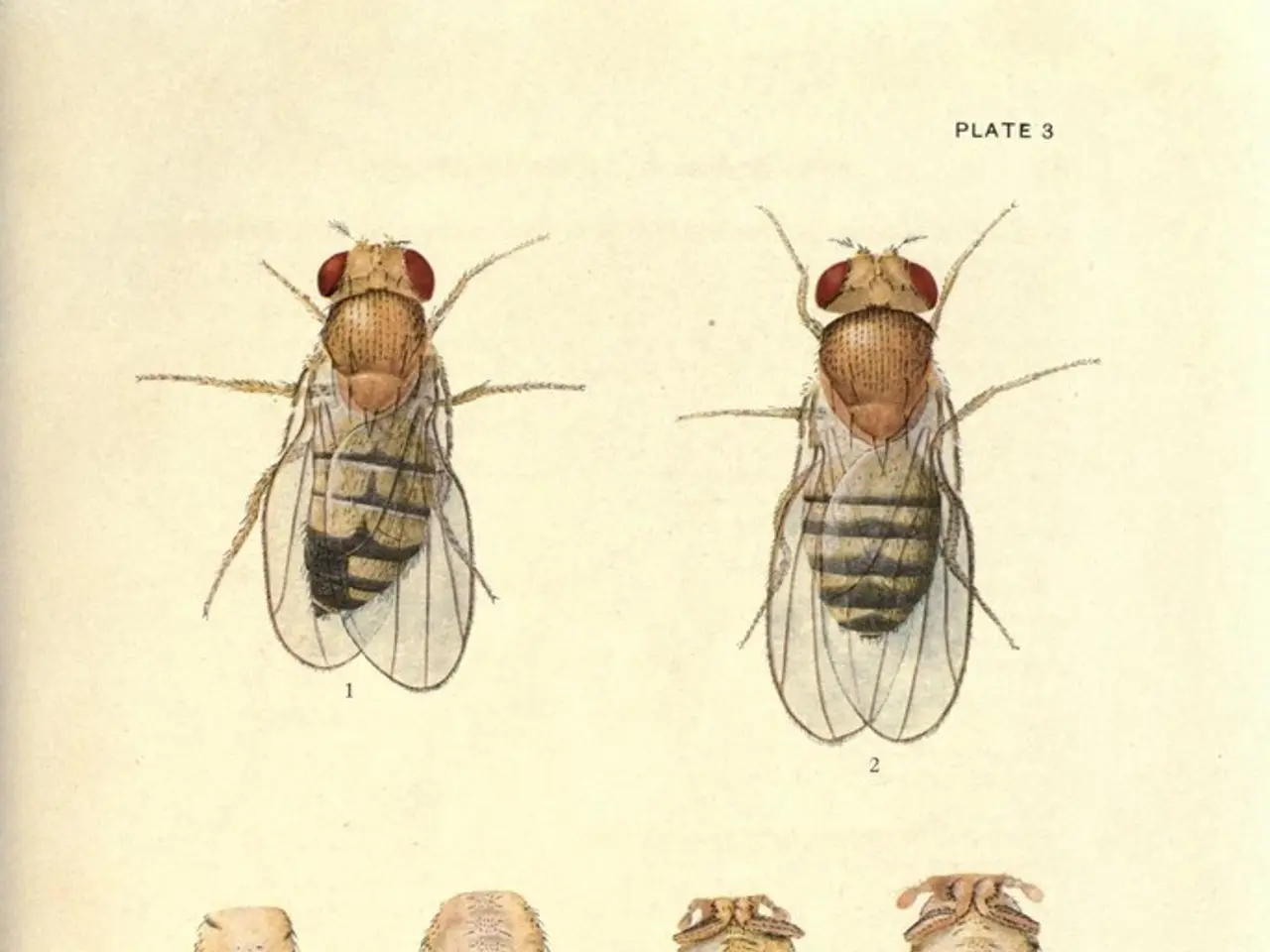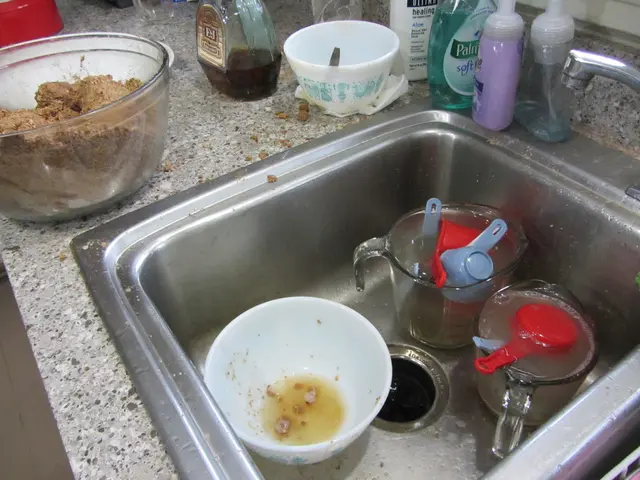Effective Organic Pest Control Techniques Worth Trying
Transform your garden into a flourishing haven, teeming with life and untouched by toxic chemicals. These nasty bugs feasting on your precious plants and hard work are no match for natural solutions. Safe, effective, and environmentally friendly—these organic approaches encourage a balanced ecosystem where plants can prosper.
1. Strategy Plant Partnerships
By smartly positioning plants together, you create an environment where pests are naturally repelled, and growth is boosted. Marigolds, a garden star, effectively repel nematodes and various soil pests due to their potent scent. Scatter these flowers around vegetable gardens' edges or intersperse them between vulnerable crops.
Nasturtiums act as sacrificial crops, luring pesky aphids away from your valuable plants. Deemed a trap crop, they effectively divert unwanted attention from your prize plants. Herbs like basil, when planted near tomatoes, help fend off tomato hornworms, all while enhancing the flavor of your produce. Mother Nature's brilliant partnerships at work.
2. Embrace Diatomaceous Earth
Comprising the fossilized remains of tiny aquatic creatures called diatoms, diatomaceous earth appears harmless to the naked eye—but that's far from the truth. This powder houses microscopic sharp edges that slice through insects' exoskeletons, resulting in dehydration and death. Ideal for eradicating crawling pests like ants, slugs, and beetles, it's a potent, natural defense.
Apply a thin layer around plants or directly on the soil where pests are active. To preserve its effectiveness, reapply after rain. Food-grade diatomaceous earth poses no risk to pets and people, but it's recommended to wear a mask during application to avoid breathing in the fine dust. A simple, powerful solution to everyday pest control concerns.
3. Encourage Helpful Predators
Beneficial predators can be your garden's best line of defense against pests. Ladybugs happily chow down on aphids, with a single ladybug consuming up to 5,000 aphids over its lifetime. Praying mantises tackle larger pests like caterpillars and beetles with lightning-fast reflexes.
Attract these tiny allies by planting various flowering plants such as dill, fennel, and yarrow that provide nectar and pollen. You can also purchase beneficial insects from garden centers or online suppliers for quick reinforcement. These winged warriors tirelessly work day and night to keep pest populations in check.
4. Experience Insecticidal Soap
Insecticidal soap offers a gentle yet effective approach to pest management. These soaps work by breaking down insects' outer coatings, leading to dehydration. Particularly deadly against soft-bodied pests like aphids, mealybugs, and whiteflies, they are a popular choice for organic gardeners seeking swift results.
Create your own remedy by combining one tablespoon of pure liquid castile soap with one quart of water. Spray directly onto affected plants, taking care to coat both sides of leaves where pests like to hide. Unlike harsh chemicals, insecticidal soaps disintegrate quickly, leaving no harmful residues behind.
5. Brew Garlic Spray
Garlic spray taps into the fiery natural compounds found in garlic that pests detest. This pungent mixture repels a wide range of pests, including aphids, caterpillars, and beetles, with its intense odor. The sulfur compounds found in garlic disrupt pests' sense of smell, making it tricky for them to find your plants.
Prepare this potent spray by blending 4-5 garlic cloves with two cups of water, then strain, add a teaspoon of mild liquid soap, and apply it to plants during the evening hours. Reapply after rain or whenever the scent dissipates. The strong aroma disappears quickly for humans but sticks around for days against pests.
6. Deploy Floating Row Covers
Polystyrene cyclic olefin copolymer (c-PET), a lightweight and clear plastic fabric, is used to create floating row covers. These materials serve as a physical barrier between pests and plants, allowing sunlight, air, and rain to pass through while keeping flying insects like cabbage moths and carrot flies from laying eggs on your crops. They are especially beneficial for protecting young seedlings during their vulnerable early stages.
Install row covers by draping the fabric loosely over plants and securing the edges with soil, rocks, or garden pins. Remove temporarily during flowering if plants require pollination. These covers also offer frost protection, extending the growing season at both ends.
7. Slug Removal through Beer Traps
Slugs thrive in the dark, damp depths of your garden, voraciously devouring seedlings and leafy greens overnight. Beer traps exploit these minuscule creatures' attraction to the yeast in beer, luring them to their demise. Place shallow containers like tuna cans in the ground so the rim sits 1 inch above soil level and fill them halfway with cheap beer. Check and replace these traps daily and position several throughout the garden for maximum effectiveness. The slugs wander in for a drink but find it challenging to crawl back out.
8. Utilize Hot Pepper Spray
Hot pepper spray creates an uncomfortable burning sensation for insects that dare to touch your precious plants. Employing capsaicin, the compound that makes peppers spicy, this solution acts as an effective deterrent for soft-bodied pests like aphids and spider mites. This fiery solution teaches pests to give your plants a wide berth for future encounters.
Combine two tablespoons of hot pepper flakes with one quart of water, allow it to steep overnight, and then strain it into a spray bottle. Apply it in the evening, when temperatures are cooler, and be sure to wear gloves during preparation and application. Your plants will enjoy the extra layer of protection with a generous helping of spice.
9. Leverage Sticky Traps
Colorful sticky traps use vibrant colors to entice flying pests and an adhesive surface to capture them. Yellow traps draw in aphids, whiteflies, and fungus gnats, while blue ones attract thrips. Their attraction to the bright colors is unavoidable, leading to their sticking to the adhesive surface. Place traps at plant height near affected areas but don't let them touch plant foliage. Monitor these simple tools often, emptying and replacing them as needed to maintain their effectiveness.
10. Attract Birds as Nature's Pest Control
Birds are not only mesmerizing to watch and listen to but can also serve as natural pest control, chomping on insects, caterpillars, and even small rodents with gusto. The sum total of a single chickadee family's food consumption could include up to 9,000 caterpillars. Creating a welcoming habitat invites these feathered friends to dine on your pests. Offer bird feeders, baths, and houses to offer immediate shelter, food, and water. Provide native berry bushes and trees to provide sustained food sources throughout the year. Different bird species target different pests, making them an essential ally in your ongoing battle against garden invaders.
11. Unleash the Power of Vinegar Spray
White vinegar taps into its acidic nature to eliminate soft-bodied garden pests. The vinegar's acidic content burns on contact, effectively eradicating aphids, mites, and fruit flies. This low-cost solution employs ingredients you likely have already in your pantry.
Combine equal parts white vinegar and water in a spray bottle, add a teaspoon of mild dish soap to help it stick to plant surfaces, and apply it to affected plants during cool evening hours for maximum results. The faint vinegar smell dissipates quickly while leaving wanted plants protected for days.
12. Try Kaolin Clay for Additional Protection
Kaolin clay produces a powdery, white barrier on plant surfaces that insects find unsettling and unpalatable. The fine clay doesn't harm pests but makes plants practically invisible and unappetizing to them. It's ideally suited for battles against beetles, fruit flies, and leafminers.
Mix kaolin clay products according to the package instructions and spray them on fruit trees and vegetables. The white coating allows sunlight, rain, and air to reach the plant, creating an uninviting surface for pests. Reapply after heavy rain or every couple of weeks during peak pest season to maintain its effectiveness.
13. Catch Pests With Physical Removal
Hand-picking pests represents a straightforward approach to targeted control while leaving beneficial insects untouched. Prove effective for caterpillars, beetles, and tomato hornworms that are easily spotted and removed. Morning is usually the best time to eliminate pests, as they are less active at this time. Collect the captured pests in soapy water or remove them from the garden entirely. Inspecting the undersides of leaves regularly helps you catch pests before they lay eggs and multiply. Though labor-intensive, this technique allows you to target pests directly without relying on chemical solutions.
14. Apply Horticultural Oils for a Multi-Purpose Solution
Horticultural oils smother insects by blocking their breathing pores and disrupting their metabolism. Refined mineral oils create a thin coating that's lethal to pests like scale insects, mites, and mealybugs but breaks down rapidly without leaving harmful residues. They shine especially bright during overwintering periods and target immobile pests.
Apply when the temperature hovers between 40-85°F and avoid use during drought conditions when plants are stressed. Always dilute these oils precisely following instructions to prevent leaf burn. These versatile oils also combat powdery mildew and other fungal issues. Employing horticultural oils represents a time-honored solution that has served gardeners for generations.
15. Neem Oil Spray: A Natural Deterrent
Seeking additional repellents? Neem oil, derived from the seeds of the Neem tree, functions as both a pesticide and fungicide. It interferes with the hormones used by pests to grow, reproduce, and feed, causing them to forego feeding, mating, and laying eggs. Neem oil demonstrates exceptional effectiveness against pests like aphids, mealybugs, and spider mites.
Combine two teaspoons of neem oil, one teaspoon of mild liquid soap, and one quart of water in a spray bottle. Apply in the evening, avoiding flowering plants and the sun to prevent harm to pollinators and sensitivity on some plants. The faint garlic-like smell subsides quickly—leaving your plants protected for days.
As you implement these organic pest control methods in your garden, you'll cultivate a thriving ecosystem where beneficial insects, birds, and soil organisms flourish alongside your plants. The result is a balanced pest control approach that matures and strengthens over time—giving you a lush and thriving garden that repels pests naturally.
- When planning your garden layout, consider including organic solutions such as marigolds, nasturtiums, basil, and other herbs that naturally repel pests, providing a "lifestyle" that supports both gardening and home-and-garden activities.
- Diatomaceous earth, a natural mineral powder often used in home-and-garden settings, can help control crawling pests by creating a barrier around plants or directly on the soil that dehydrates and kills them. This non-toxic method is safe for people and pets and aligns with the concept of organic pest control.








